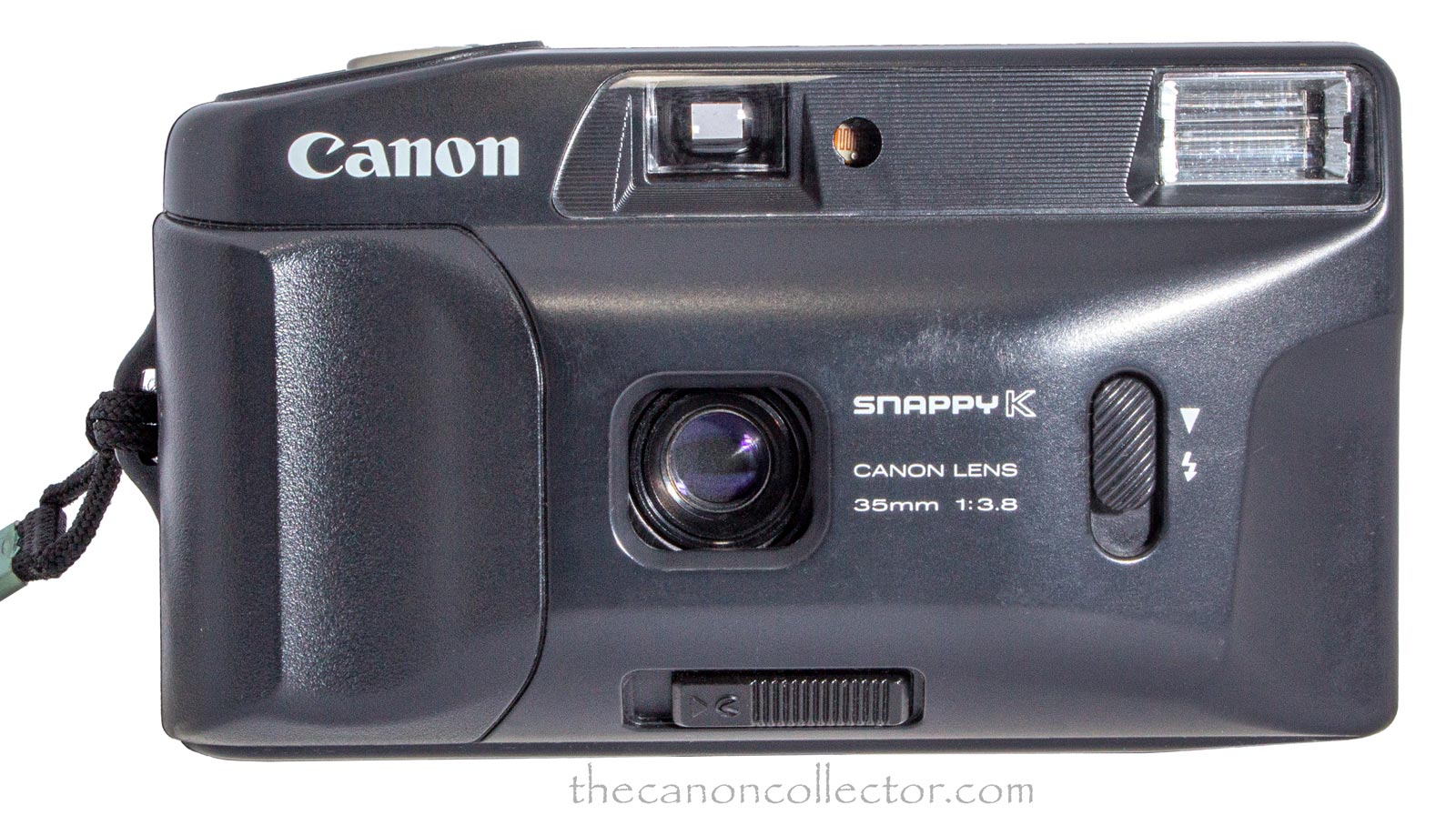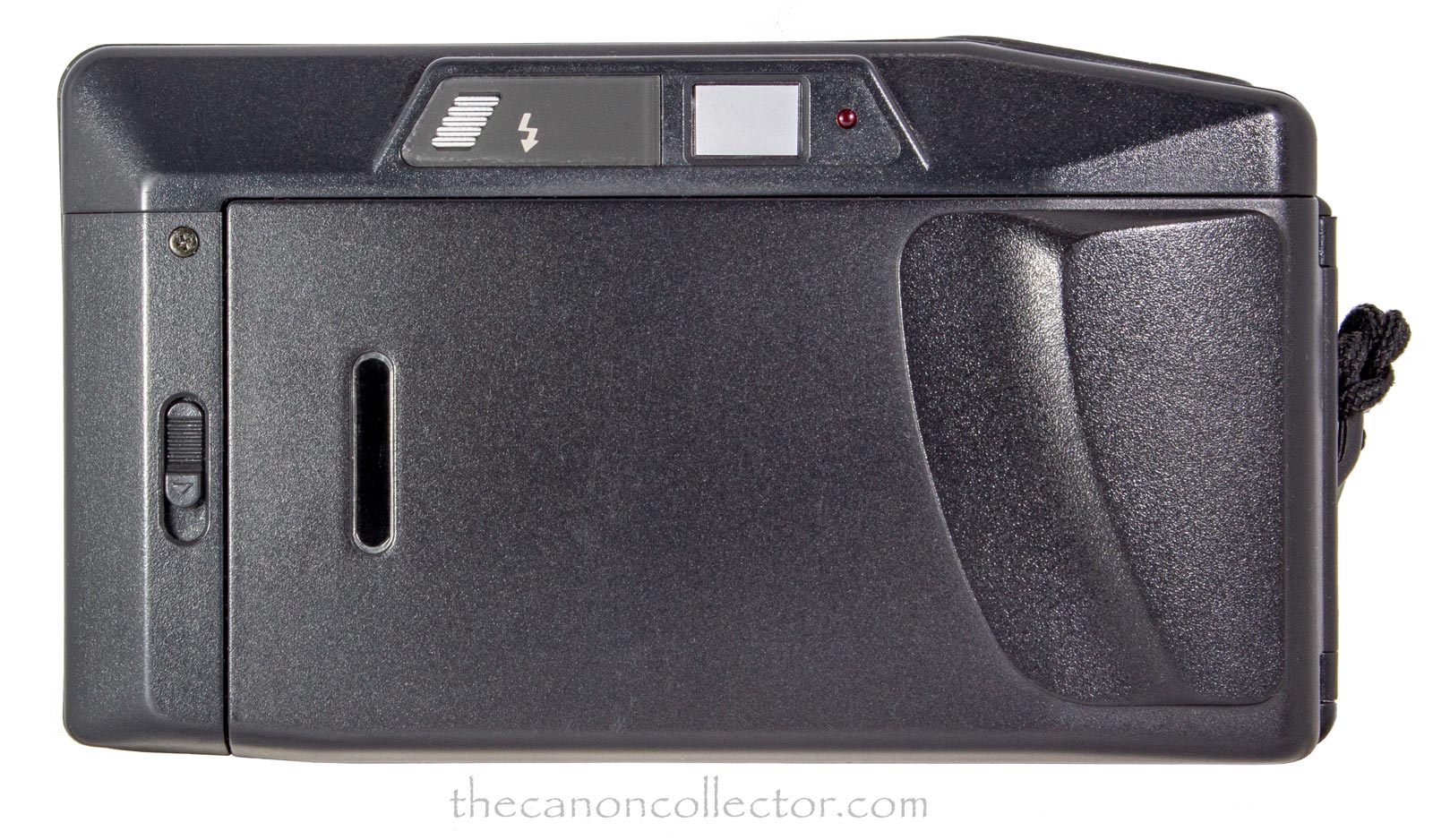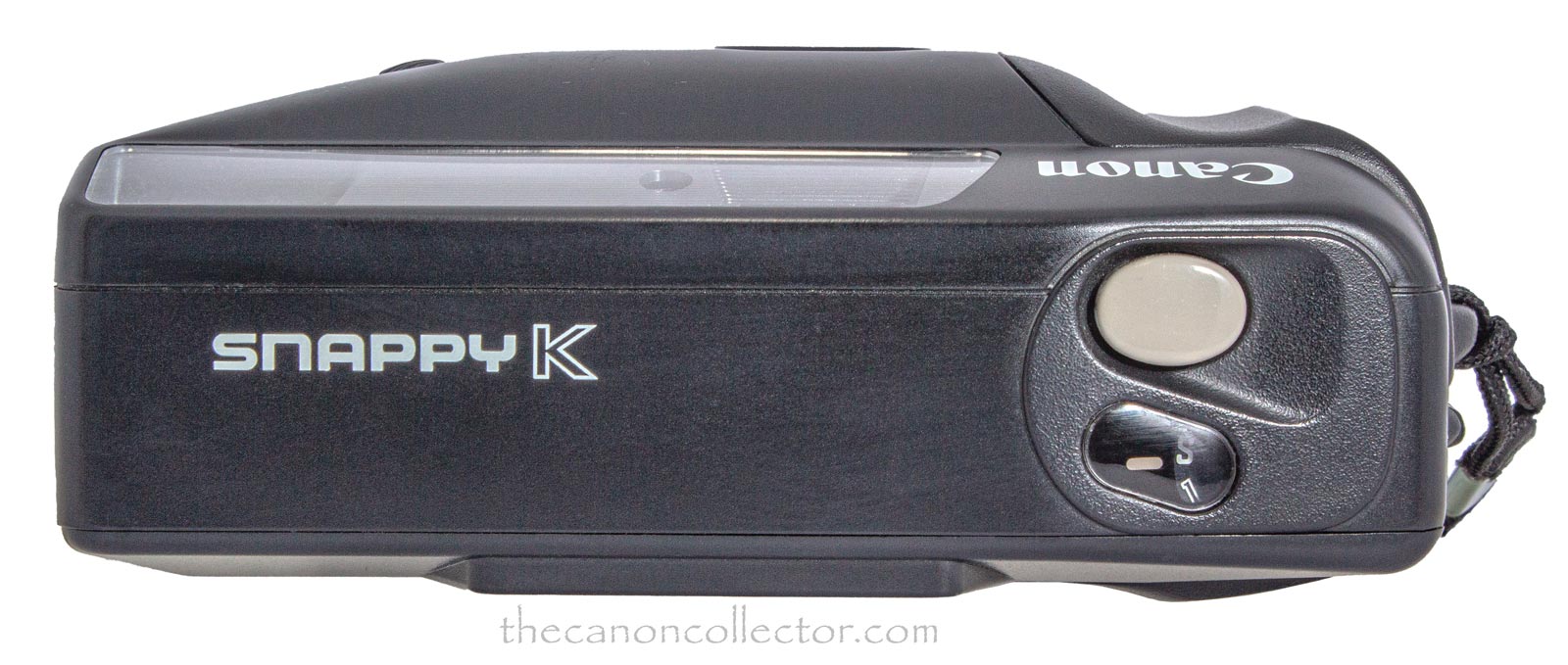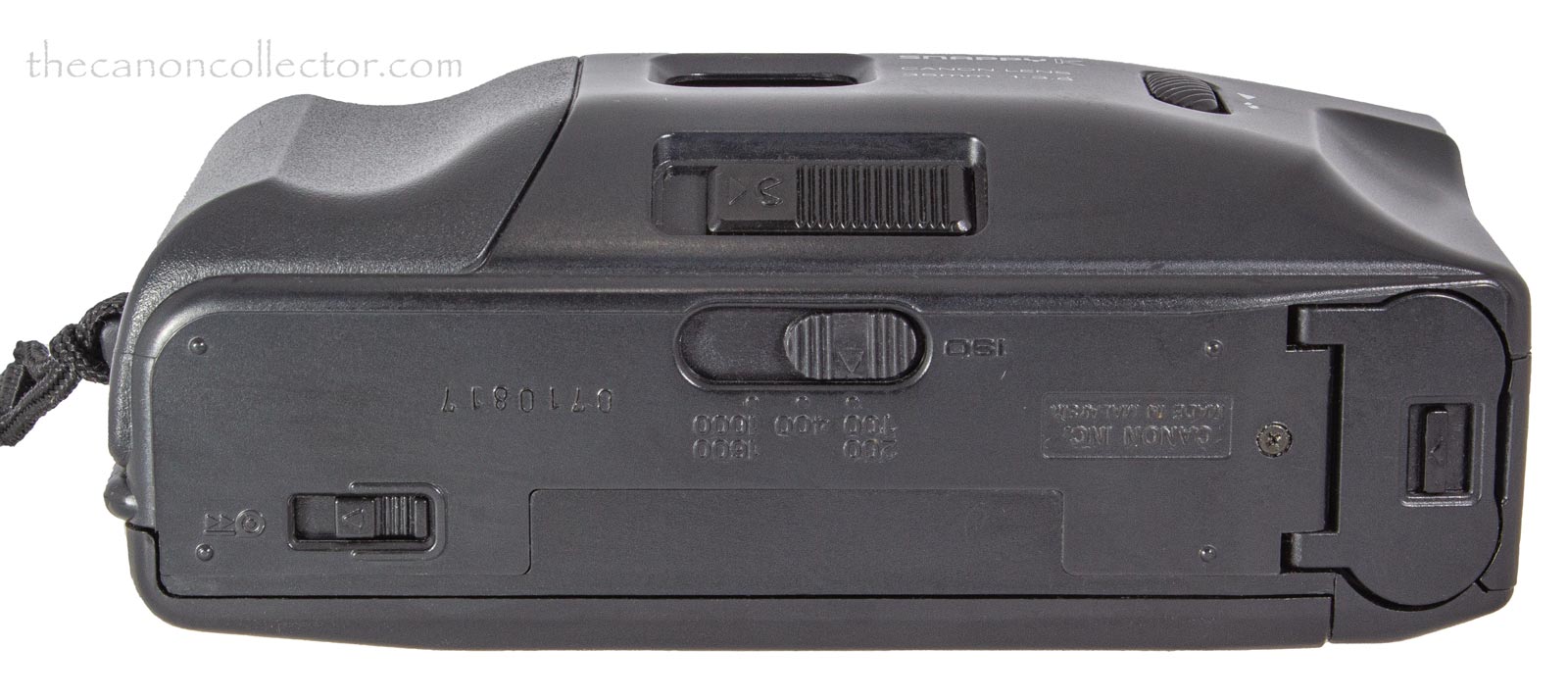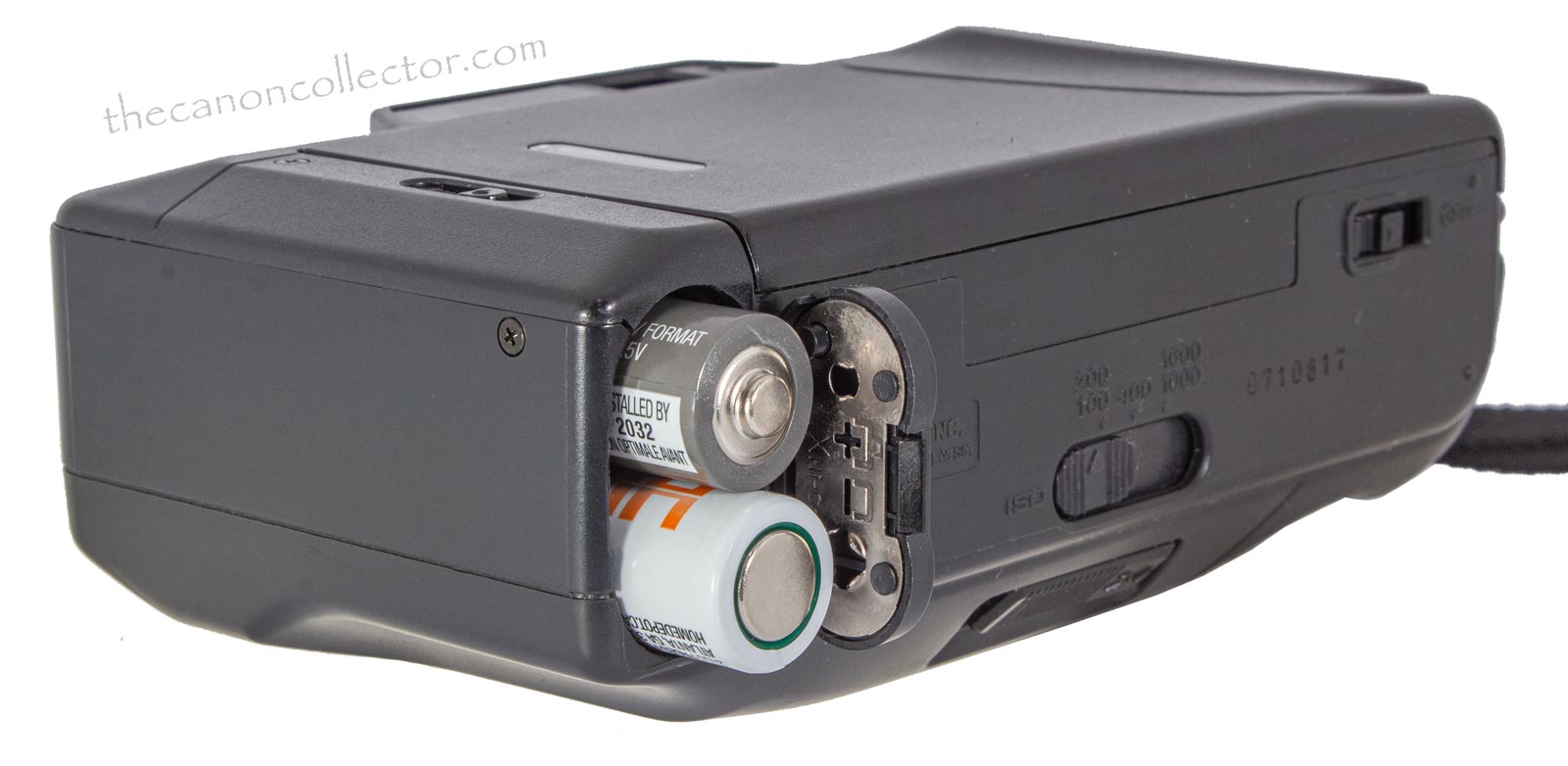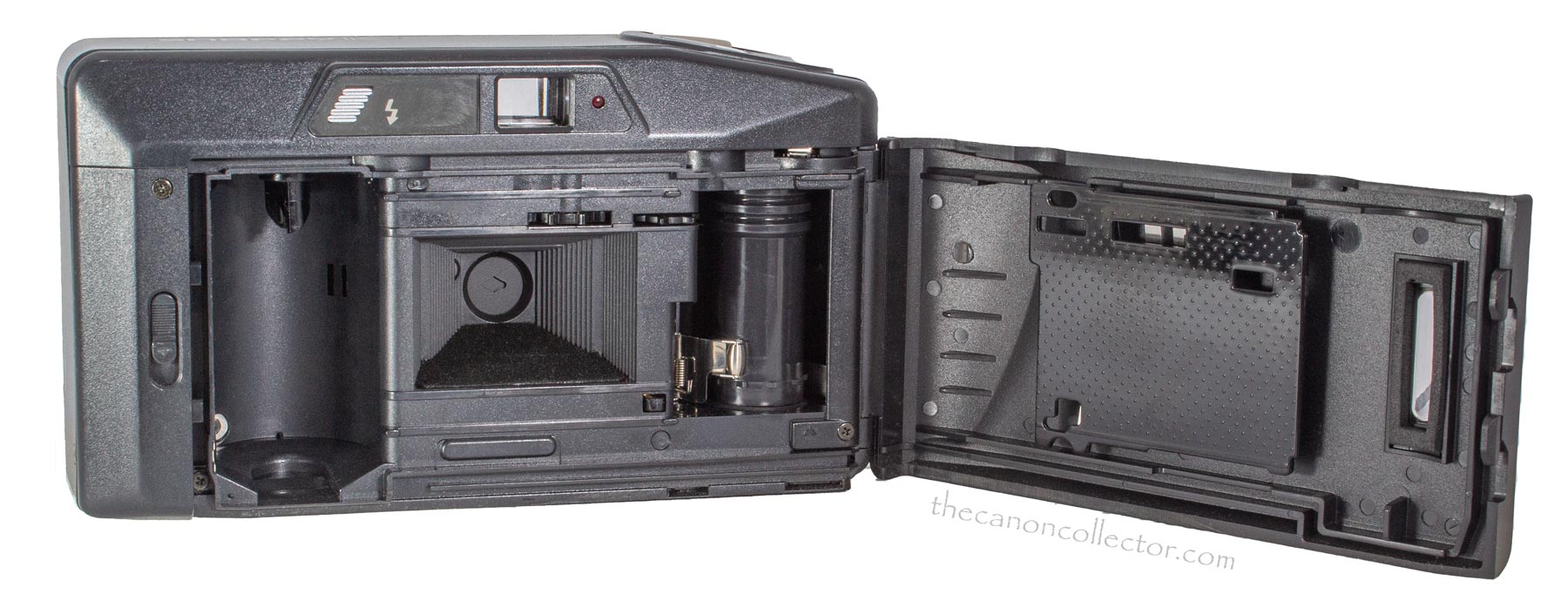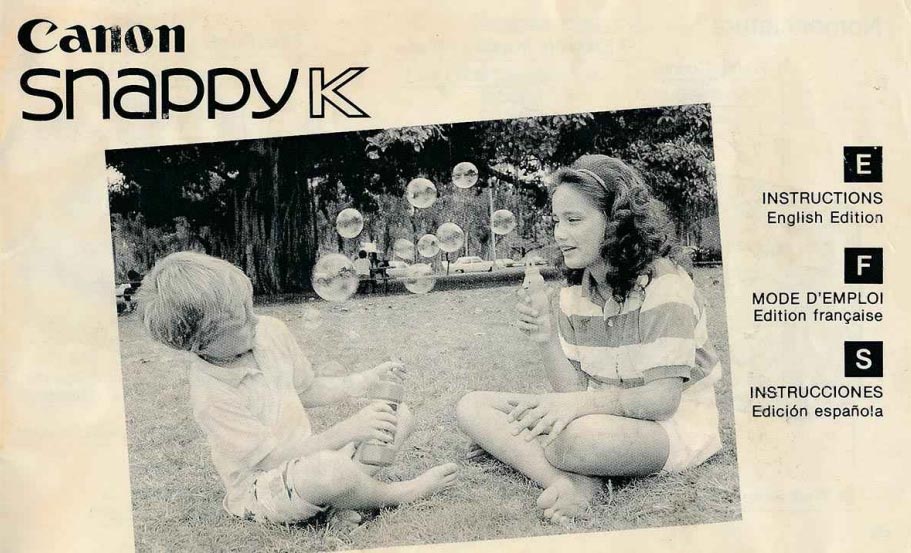This is my Snappy K (Ser. No. 0710817) with its original lanyard. This camera cannot be found in the Canon Museum.
Snappy K
The Snappy K is a bit of a mystery in a couple of ways. Firstly, I cannot find it in the Canon Museum for some reason. There seem to be lots of them for sale online so they are not rare. I guess it was just left out.
It appears to be a Snappy EZ which was introduced in April of 1988. The date on the back of the Snappy K Instruction Manual is 1989 which seems to make the two contemporaneous. Comparing the
Specifications in the Snappy K Instructions with the Specifications for the EZ on the Canon Museum also suggests that they are the same camera. I don’t have an EZ but I have ordered one to investigate further..
The front of the Snappy K has two controls: the Flash On-Of switch to the right of the lens and the Lens Cover Switch below it.
We have a Newsletter
There is a Newsletter for thecanoncollector.com to keep you up to date on what we are posting. Try it!
The Snappy K is a very basic point and shoot camera not much improved on a Kodak box camera except it uses 35mm film. The lens is 3 elements in 3 groups making up a 35mm f/3.8 lens. Focus is fixed at 9.5 feet. Turning the flash on the lens moves outward, you can see it if you look, so that focus is at 6.6 feet.
In this picture the Lens Cover of the Snappy K is closed. It is controlled by the slide switch below the lens.
On the bottom of the camera is a three position switch to set film speed. The settings are 100-200, 400 or 1000-1600. Setting the film speed also sets the aperture and it is not affected by the light meter. From reading the manual closely I think this is the exposure method: Shutter speed is fixed at 1/125th second; Setting film speed sets aperture for a decent exposure on a bright day; The CdS cell measures the light and flashes a red “Under Exposure Warning Lamp” in the viewfinder if there is insufficient light. The remedy is to use the built in flash. This is a very primitive system. As I said, not much better than a box camera.
All of this goodness is powered by 2 x AA Alkaline cells. The manual says you cannot use NiCd batteries. I assume becuse the battery impedence affects operation of the light measuring circuits.
Film loading is easy. The cassette is loaded in the left side of the body and the film leader is laid across the lens compartment and over the spool on the right side. The camera is then closed and you fire the shutter until the number 1 appears in the counter window by the shutter button. Rewind, which you do when the film is at the end and the camera will not work any longer, is activated by a switch on the bottom of the camera.
The full instructions for the camera, such as they are, can be found in the Instruction Manual on the left.
Handling the Snappy K
I have not been able to test my camera because it does not work (well, sometimes it does not and sometimes it does). It is obviosly plastic but the fit an finish is excellent. The size is about that of a pound of butter I was able to load a roll of film and it worked as advertised and was really easy. But that is as far as I got.
I have ordered a Snappy EZ which should arrive shortly and hopefully it will be functioning. If it is I will upgrade this page, hopefully, with pictures.
This website is the work of R. Flynn Marr who is solely responsible for its contents which are subject to his claim of copyright. User Manuals, Brochures and Advertising Materials of Canon and other manufacturers available on this site are subject to the copyright claims and are the property of Canon and other manufacturers and they are offered here for personal use only.


